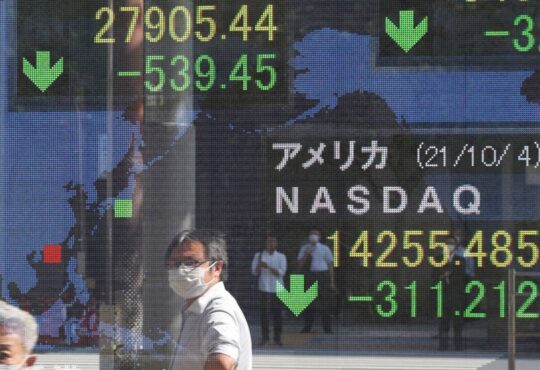
Table of Content
Show more
Show less
With Bitcoin and Ethereum prices up 30% and 27% since the start of the year respectively, could the crypto winter that decimated the market in 2022 finally be thawing?
Here’s a look at whether the recent trend is a blip or the sign of things to come.
Market themes
There are key themes within the crypto sector that may determine the road ahead. They include regulation, the next Bitcoin halving, and the wider economy.
Regulation
The UK government is planning to bring crypto into regulation and treat it like any other financial product/service. As such, consumers would be better protected against bad actors.
The eventual implementation of a regulatory playbook would be a big confidence boost for both the reputation of cryptocurrencies and the sector itself.
Regulation in the UK would:
- protect investors’ money when a crypto business goes bust
- ensure crypto promotions are clear, fair and don’t mislead
- strengthen data-reporting requirements of crypto firms and
- introduce measures to prevent ‘pump and dump’ schemes in which a person or organisation artificially inflates the value of an asset for profit.
The safeguards of regulatory scrutiny could give consumers greater confidence that their money is safe and encourage wider participation and investment. If this happens, rising demand could push prices up.
2024 Bitcoin halving
We’re a little over a year away from the next Bitcoin ‘halving’. In April 2024, the amount of Bitcoin given as reward to miners who add a block to its blockchain will halve, going from 6.25BTC to a projected 3.125BTC.
This will significantly reduce the supply of the crypto asset and, logically, increase demand as it creates scarcity.
Anticipation of the halving, even 13 months ahead of time, could begin to push up both demand and prices as speculators look to take advantage.
Economic factors
The value of crypto assets broadly mirrors the performance of the stock market, which means they’re affected by the same monetary policy and geopolitical and regulatory pressures.
Year-on year inflation in the UK is thought to have peaked at 11.1% in October 2022 before declining in November and December before reaching 10.1% in January. Over the same period, the Bank of England raised its base rate from 3% to 3.5% and then 4%.
Commentators agree that inflation is likely to fall throughout 2023, but disagree on the speed it might come down and how far it could fall. Falling commodities prices such as wholesale oil and gas, point to a continued easing of inflation.
Though falling, it’s thought inflation will remain above the Bank of England’s 2% target by the end of the year. The Confederation of British Industry (CBI), which represents employers, expects to end 2023 at 3.9%.
Meanwhile, the FTSE100 recently reached breached the 8,000 barrier in intra-day trading for the first time, topping 8,026 before settling back around the 8,000 mark.
In 2022, the FTSE delivered returns of around 1%. Compared to the US S&P 500, which fell by 18% over the same period, this was relatively good news.
As of Tuesday, 14 February however, the index was up by around 5% year on year, bolstered by huge energy company profits and speculation over takeovers in the banking sector.
With a consensus of experts agreeing that UK shares could continue to rise, the economic outlook could mean crypto prices are poised to rise.
Expert opinions
Andrew Thurman, Researcher at blockchain analytics firm Nansen, says there are signs the market is going through a typical cycle that could see prices trend upwards, but that it’s too early to tell if we’re entering a crypto spring: “Throughout their history crypto markets have proven to be notoriously cyclical, with multiple drawdowns of 80% or more in major assets like BTC and ETH.
“However, every time a pundit looks to declare crypto dead, the industry has roared back with a raging bull market.
“While it’s premature to say the same pattern will play out now, there are multiple promising signs of life for the crypto market. Key DeFi metrics such as the number of swaps and active addresses have doubled since the start of the year, along with NFT trading volumes.
“The total stablecoin supply – a proxy for whether or not traders believe it’s worthwhile to have dollars on-chain – has begun to flatten out after months of drawdown.
“If you’re someone who believes another textbook crypto cycle will play out, there’s increasingly strong evidence on your side.”
Berk Ozdogan of decentralised crypto exchange Dexalot says prices will really start to change once regulation of the space moves forward: “I view the current state of the market as early days of maturing. Overall my expectation of 2023 to be more a sideways year than up-only, and I firmly believe that the next big cycle will be driven by regulation more than anything else.”
Dmitry Machikhin, CEO of crypto asset tracking website BitOK thinks it’d be premature to declare the crypto spring started: “Bitcoin and other coins are still too tied to the stock market and are not going to come off. The effects of the Covid-19 pandemic and inflation remain far-reaching, with no additional money entering the market to be invested in high-risk assets, as printing money is no longer an option.
“For now, the best hope for increased growth in the cryptocurrency market lies in the upcoming Bitcoin halving, which could bring new incentives for users and new money to the market. Until then, the trend is likely to remain sluggish and any brief flashes of growth will likely be localised and not have a major impact on the overall market.”
Whitney Setiawan of Singaporean crypto exchange Bitrue thinks wider economic signals point towards a bear market, rather than a bull run: “We must keep in mind that the macro foundation for the markets is not as strong, and a change in Fed tone could potentially disrupt the formation of a sustainable bull run.
“For this reason, it would be safer to bet on a bear market rally rather than a full-fledged bull market. Other than that, the crypto price bottoming and the buy-the-dip mentality of crypto traders are the main drivers behind this significant increase in price.
“Historically speaking, bear market rallies with parabolic upwards movement that is quite common before a substantial decrease in price, and this could be the case this time as well.”





